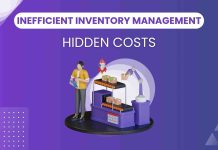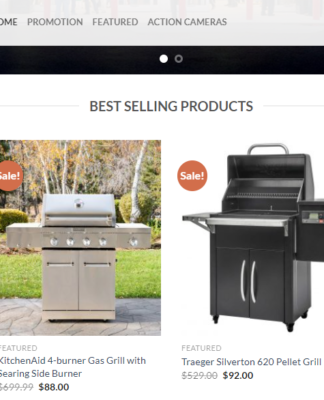Genuine Parts Co
Genuine Parts Co has been played an optimization strategy, which positions it well for higher margins and global business expansion. Over the next several years, we expect Genuine Parts to be among the best stocks to invest in. The company benefits from low gasoline prices that enable consumers to put more miles on their cars – a key driver of auto-parts sales. We also expect the company to benefit from growth in the number of vehicles on the road and the average age and complexity of these vehicles. These factors should boost demand from the small repair shops that account for 75% of NAPA-brand sales. Although the company faces risks from Amazon, which is stocking more auto parts, and from electric vehicles, which may not use as many after-market parts as internal combustion vehicles, we do not believe these threats pose a risk in the near term.
RECENT DEVELOPMENTS
The company has a history of targeted, bolt-on acquisitions and divestitures. GPC sold S.P. Richards, its business products segment completed GPC’s efforts to optimize its portfolio. Management believes that the $3 billion in revenue lost from divestitures over the last three years (S.P. Richards, Auto Todo, and EIS) will be offset by higher returns on its higher-margin auto parts and industrial segments. Other acquisitions from 2019 include the Todd Group (anticipated annual revenue of $85 million), Inenco, the PartsPoint Group (anticipated $330 million in annual revenue), and Axis New England. In 2018, GPC’s Alliance Automotive Group acquired Platinum International Group Ltd. and TMS Motor Spares Ltd. On July 30, Genuine Parts reported 2Q20 adjusted earnings of $190. Total segment operating profit was $328 million, down 10% (down 6% on a pro forma basis). The 2Q tax rate was 24.1%, down from 24.8% a year earlier. Second-quarter net sales fell by $3.82 billion. Comp sales fell 13.7%. Excluding divestitures, sales declined 10.1%. Sales came in $46 million below the consensus forecast, with declines in all segments. The increase reflected the favorable impact of higher-margin acquisitions and lower-margin divestitures. Adjusted SG&A expense fell 13.8% to $971 million, or 25.4% of 2Q sales, reflecting cost savings efforts, following the sale of S.P. Richards Automotive (65% of 2Q sales) and Industrial (35%). In the Automotive segment, 2Q net sales fell 10.1% to $2.5 billion, reflecting a sharp decline in April due to COVID-19-related disruptions, followed by a strong recovery in May and June. Comp sales fell 12.6%. Segment profit was $219 million, down 4.3%, while the segment profit margin increased 60 basis points. In North America and Canada, sales were down 12% and 13%, respectively, with comp sales down 13.8% and 15%. However, the operating margin grew 60 basis points in North America and 400 basis points in Canada. In Europe, sales were down 3%, reflecting a 40% decline in April from COVID-19 shutdowns, offset by high single-digit growth in May and June. Net sales in .1% as reported and 10.2% on a pro forma basis. Segment profit was $109 million, down 20% (10% on a pro forma basis). Comp sales in North America fell 16.7%, though acquisitions boosted sales by 7%. GPC began a $100 million cost-savings program that generated savings of $70 million within the first six months. It expects to exceed its $100 million targets by year-end. It also generated $150 million in incremental savings from headcount reduction, pay cuts, facility closures, and other efforts to reduce costs during the pandemic. The company took a $507 million non-cash impairment charge during the quarter to account for its European operations. However, it expects July sales to be flat, with a 6% increase in automotive sales offset by a 12% decrease in industrial sales. Its previous 2020 guidance called for .0% (up 3%-4% excluding divestitures) and adjusted EPS of $5.97-$6.09.
EARNINGS & GROWTH ANALYSIS
We expect earnings in the Automotive Parts Group to be driven by the addition of new stores in Australasia and Mexico, higher sales, and new product offerings. The Industrial Parts Group benefit from growth in new categories such as automation, pumps, and safety equipment.
FINANCIAL STRENGTH & DIVIDEND
Our financial strength rating on Genuine Parts is Medium-High. The company has solid margins and relatively low debt than other auto companies, but it is a cyclical business. Total debt was $3.2 billion, down from $3.4, total 53%, up from 48.1%. We note that the company has sold its receivables, resulting in a $500 million A/R decline. Cash from this sale and recent divestitures was used to pay down $400 million in debt. The company also entered into a $500 million international credit agreement in 2Q, increasing its credit capacity to $4.8 billion and its available liquidity to $2.6 billion. The company has a syndicated credit facility that matures in 2022 (including a $1.5 million revolving credit facility and a $1.1 million term loan), which was amended in May 2020 to increase the leverage ratio. GPC cash going and payout for 64 straight years. Over the last five years, the company has raised the dividend at an annual rate of about 6%. Genuine Parts repurchased 800,000 shares in 2019 and has 15.6 million shares remaining on its buyback authorization. The company has suspended share repurchases temporarily due to economic uncertainty caused by COVID-19.
MANAGEMENT & RISKS
In May 2016, Paul Donahue became the company’s new CEO – just the fifth chief executive in the company’s 88-year history. Former CEO Thomas Gallagher continues as non-executive chairman. The countercyclical nature of the auto parts industry suggests that when new auto sales are strong, sales at parts retailers will typically be weak as the need for repairs declines. Although do-it-yourself sales have fallen due to the increasing complexity of new vehicles and the improved quality of cars and parts, repair and maintenance work by DIYers (do-it-yourself) will often increase during periods of economic hardship. Nevertheless, the DIFM (do-it-for-me) side of the auto parts industry continues to grow twice as fast as the DIY segment, reflecting the impact of increased vehicle complexity and customer loyalty programs, as well as consumers’ interest in quick repairs. Amazon is likely to become a more prominent player in the market. While Amazon is a formidable competitor and will probably grab some initial share from very sophisticated DIYers, parts stores should continue to play a valuable role for less knowledgeable DIYers and professionals who need massive inventory and intraday delivery availability offered by GPC’s NAPA stores. The – both retail and commercial – with cars over being off warranty and needing more repairs. Higher gas prices could crimp driving and reduce the wear and tear that boosts the need for auto parts. Companies don’t benefit from mild weather as car parts aren’t being worn out or subjected to rain and slush and rock salt, nor do they benefit from harsh weather when people stay home. In depressed economies, customers repair, but if consumers are flush enough, they can afford to buy or lease a new car. Demand for auto repairs also depends on the quality of vehicles (which we believe to be improving) and the length of factory warranties. Sales of industrial parts, electrical components, and office supplies are likely to be tied to the level of capacity utilization and general economic activity. GPC’s office supply segment faces stiff competition from more prominent players such as Staples and Office Depot and declining demand for pens, paper, and other core office products. The company could also be hurt by currency fluctuations that overshadow the underlying performance of the business. GPC may also have difficulty passing on higher commodity costs to customers. Although GPC has historically grown through M & M&A, it may have trouble integrating acquired businesses and may not find attractive acquisition candidates in the future.
COMPANY DESCRIPTION
Genuine Parts had 2019 revenues of $19.4 billion, trading at 19.5-times our 2020 average of 19.0 and an industry average of 20.3. We see further upside for the stock and raise our target price to $105, implying a reasonable multiple of 18.8-times our EPS estimate for 2021, when we expect earnings to recover.
Owens Corning
Owens Corning has three segments: Composites (36% of sales), Insulation (24%), and Roofing (40%). Insulation revenue fell 10%, as expected, in 2Q20. 5% from 6%. Composites revenue declined 26%, also as expected, in 2Q20. Roofing revenue dropped again in 2Q, falling 13% from the prior year in constant currency, 300 basis points to 22% as a resilient shingle market recovery led to improving demand. Operations are now running at full capacity in Roofing.
FINANCIAL STRENGTH & DIVIDEND
The company finished 2Q20 with $1.5 billion of available liquidity, including $600 million in cash. During the second quarter, it paid down $210 million on its existing revolving credit facility. OC’s only near-term debt maturity is the remaining $150 million from its term loan, due in February 2021.
MANAGEMENT & RISKSIn April 2019 Mr. . Michael McMurray stepped down as CFO on October 23, 2019. Prith Gandhi, currently VP of Corporate Strategy, Corporate Development, and Financial Planning, will serve as interim CFO while conducting an external search.




















